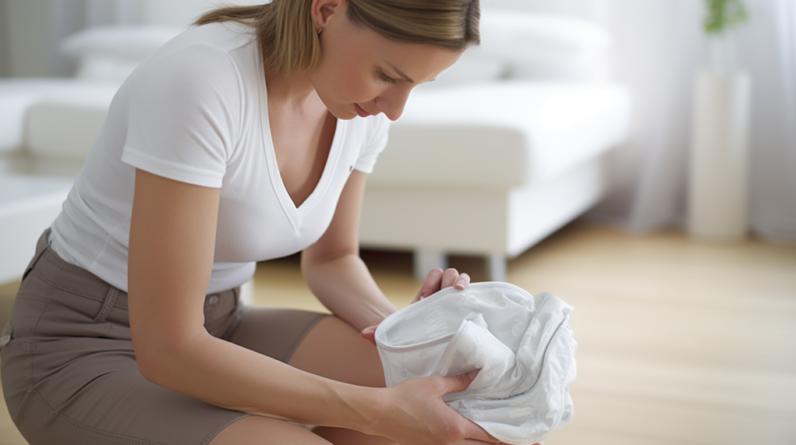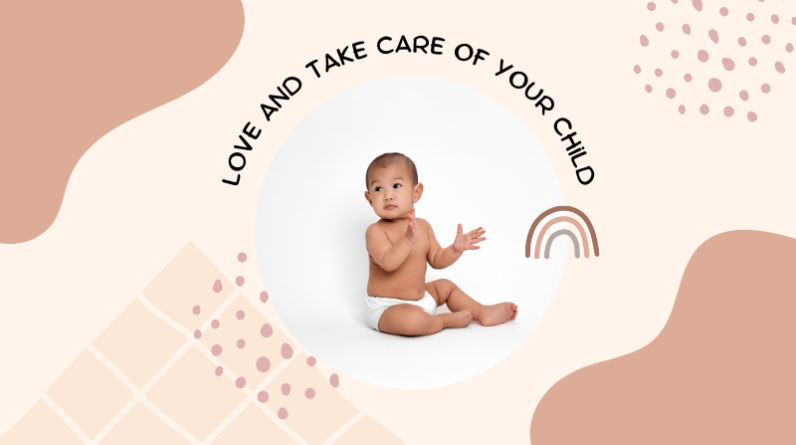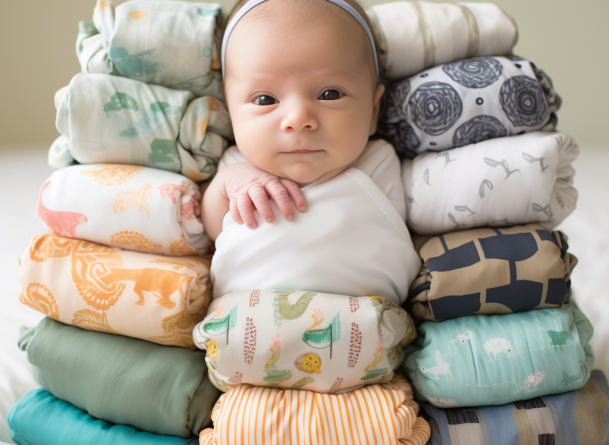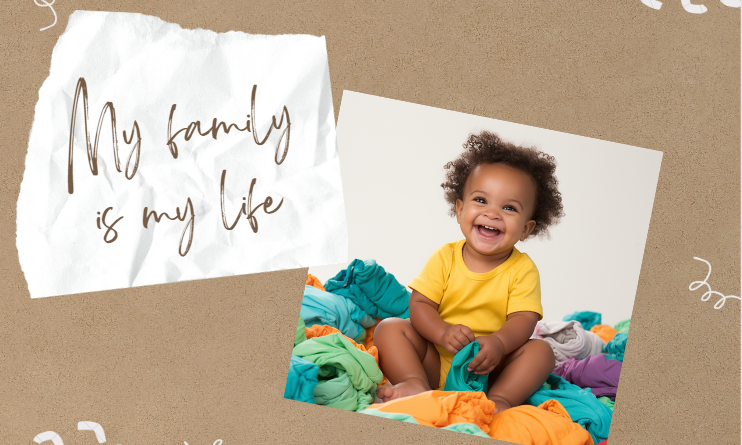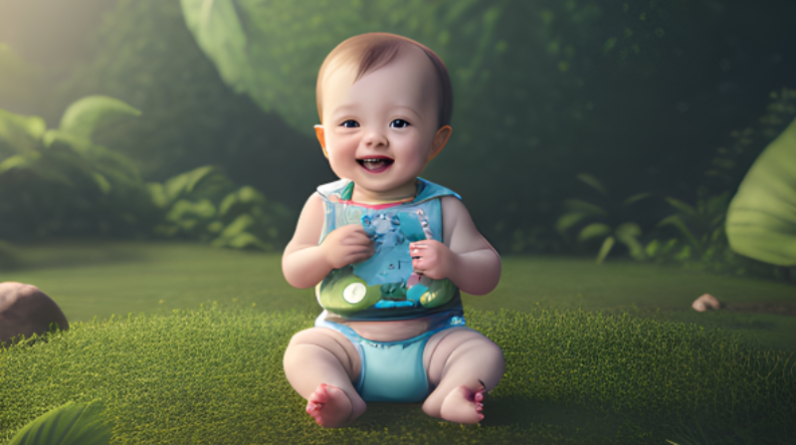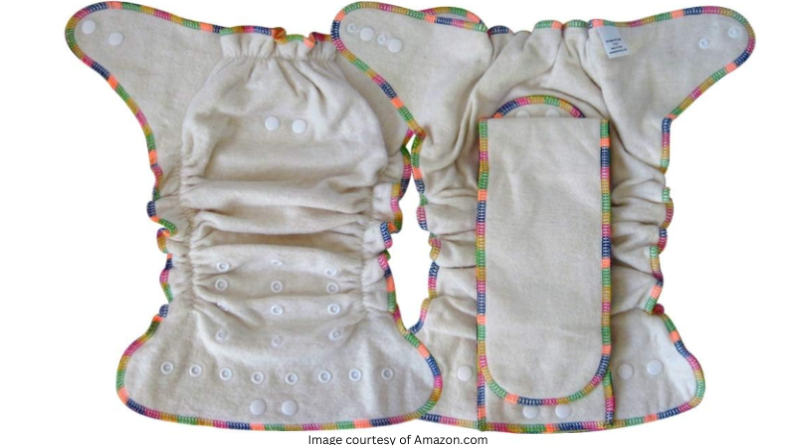
In recent years, fitted cloth diapers have gained significant popularity among parents who are looking for an eco-friendly and cost-effective alternative to disposable diapers. These diapers are crafted from soft, absorbent materials that prioritize both comfort and functionality, while also offering a wide range of styles and designs to suit every baby’s needs. Let’s delve deeper into the world of fitted cloth diapers, exploring the most popular brands, their features and benefits, closure options, absorbency levels, customization choices, pairing with diaper covers, care instructions, selecting the right size, quantity needed, price range, and the key differences between fitted cloth diapers and disposables.
Popular Fitted Diaper Brands
When it comes to fitted cloth diapers, several renowned brands have made their mark in the market. Here are three popular options that consistently deliver quality and reliability:
Features and Benefits of Fitted Diapers
These type of cloth diapers provide numerous features and benefits that make them an appealing choice for conscientious parents. Here are some advantages they offer:
Softness
They prioritize the delicate skin of your little one. Constructed from soft, absorbent materials, these diapers are gentle and comfortable, ensuring a cozy experience for your baby. Furthermore, they are free from harsh chemicals and fragrances that can potentially irritate your baby’s sensitive skin.
Absorbency
One of the standout qualities of these cloth diapers is their exceptional absorbency. These diapers are designed to hold a significant amount of liquid, surpassing other cloth diapering options. Their high absorbency makes them ideal for overnight use or for babies with heavy wetting tendencies, providing optimal leak protection.
Customization
They come in various sizes and styles, allowing you to find the perfect fit for your baby’s unique needs. Some fitted diapers also offer customization options such as adjustable snaps or inserts, which enhance absorbency and provide a tailored experience for your baby.
Eco-Friendly
In an era where sustainability is paramount, these type of cloth diapers shine as an eco-friendly alternative to disposable diapers. By opting for reusable diapers, parents significantly reduce waste in landfills, contributing to a healthier and greener planet for future generations.
Closure Options: Snaps or Hook and Loop
These type of diapers offer different closure options to suit individual preferences. The two most common choices are snaps and hook-and-loop closures.
Snaps are durable and long-lasting, ensuring a secure fit for your baby. While they may require more effort to fasten, they offer an excellent solution for parents seeking a reliable closure option.
On the other hand, hook-and-loop closures, commonly known as Velcro, are easy to use and provide a snug fit. They are particularly convenient during diaper changes, as they allow for quick adjustments. However, it’s worth noting that hook-and-loop closures may wear out over time and require occasional replacement.
Absorbency Levels and Customization Options
These cloth diapers cater to different absorbency needs, ensuring you can select the appropriate diaper for your baby. Various options are available in terms of absorbency levels and customization:
- Absorbency Levels: These diapers come in different absorbency levels to accommodate babies with varying wetting patterns. These options enable you to find a diaper that meets your baby’s requirements, whether they are a light, moderate, or heavy wetter.
- Customization: Some of them offer additional customization options beyond absorbency levels. For instance, diapers with adjustable snaps allow you to achieve a precise fit for your baby’s waist and thighs. Inserts or boosters can also be added to increase absorbency as needed, making these diapers highly adaptable to your baby’s changing needs.
Care Instructions for Fitted Diapers
Proper care is essential to maintain the longevity and cleanliness of these type of cloth diapers. Follow these care instructions to ensure the best possible performance:
- Prep your diapers: Before using these diapers for the first time, it’s recommended to wash them multiple times to remove any natural oils or residues. This preparation step enhances the diaper’s absorbency.
- Regular washing: They should be washed every 2-3 days to prevent stains and odors from setting in. Regular washing helps keep the diapers fresh and hygienic.
- Choose the right detergent: When washing these cloth diapers, use a detergent that is free from fragrances, dyes, enzymes, or fabric softeners. These additives can potentially irritate your baby’s skin or affect the diaper’s absorbency.
- Avoid bleach: Bleach can damage the fibers of these cloth diapers, so it’s best to avoid using it in your diaper care routine. Opt for bleach alternatives or natural stain removers if necessary.
Choosing the Right Size
Selecting the correct size for your baby is crucial to ensure a snug and comfortable fit. Consider the following tips when choosing a fitted cloth diaper size:
- Measure your baby: Take measurements of your baby’s waist and thighs to determine the appropriate size. These measurements will serve as a helpful guide in finding the perfect fit.
- Check the weight range: Most fitted cloth diapers provide weight ranges to assist in size selection. Ensure that your baby falls within the specified weight range for a proper fit.
- Consider your baby’s shape: Babies come in different shapes and sizes, and their body proportions may influence the fit of the diaper. If your baby has chunky thighs or a round belly, look for diapers specifically designed to accommodate their shape for a comfortable and secure fit.
How Many Fitted Cloth Diapers Do You Need?
The number of fitted cloth diapers you require depends on various factors. Consider the following factors to determine the quantity that best suits your needs:
- Laundry frequency: To maintain a consistent supply of clean diapers, fitted cloth diapers should be washed every 2-3 days. If you prefer doing laundry less frequently, you will need a larger quantity of diapers.
- Baby’s age: Newborns typically require more frequent diaper changes compared to older babies. If you have a newborn, you may need a higher quantity of diapers to ensure an adequate supply.
- Wetting tendencies: If your baby is a heavy wetter, you may need to increase the number of fitted cloth diapers in your stash to accommodate their needs.
As a general guideline, most parents find that having 20-30 fitted cloth diapers on hand provides a suitable supply for their baby’s needs.
Price Range of Fitted Cloth Diapers
Fitted cloth diapers are available at different price points, influenced by the brand and style. Here is a breakdown of the general price ranges you can expect:
- Economy: $5-$10 per diaper.
- Mid-range: $10-$20 per diaper.
- Premium: $20-$30 per diaper.
When considering the price of fitted cloth diapers, keep in mind the long-term savings they offer compared to disposable diapers. While the upfront investment may seem higher, the cost-effectiveness of reusable diapers becomes evident over time.
Fitted Cloth Diapers vs. Disposable Diapers
When comparing fitted cloth diapers to disposable diapers, several key differences arise:
- Environmental Impact: Fitted cloth diapers are an eco-friendly choice as they can be reused multiple times, significantly reducing waste in landfills. Disposable diapers, on the other hand, are single-use items that contribute to environmental pollution.
- Cost: While the upfront cost of fitted cloth diapers may be higher, they offer long-term savings compared to the continuous expense of purchasing disposable diapers.
- Comfort: Fitted cloth diapers prioritize softness and comfort, providing a gentle experience for your baby’s delicate skin. Disposable diapers may contain chemicals and materials that can potentially cause irritation.
- Convenience: Disposable diapers offer convenience as they can be thrown away after use, requiring no additional care or washing. Fitted cloth diapers, although reusable, involve regular washing and maintenance.
- Customization: Fitted cloth diapers provide options for customization, allowing for a precise fit and absorbency level tailored to your baby’s needs. Disposable diapers offer limited customization options.
Reusability of Fitted Cloth Diapers
Fitted cloth diapers can be reused multiple times before requiring washing. Most parents find that a diaper can be used and reused 2-3 times, depending on the baby’s wetting patterns and the overall condition of the diaper. This reusability factor contributes to the cost-effectiveness and sustainability of fitted cloth diapers.
These type of cloth diapers offer a compelling choice for parents seeking an eco-friendly and cost-effective diapering solution. With their softness, exceptional absorbency, customization options, and compatibility with diaper covers, these diapers provide both comfort and reliability for your little one. By following proper care instructions, choosing the right size, and considering individual needs, fitted cloth diapers can become an integral part of your parenting journey, benefiting both your baby and the environment.
So, if you’re ready to embark on a diapering adventure that combines sustainability, affordability, and functionality, fitted cloth diapers are the perfect choice for you and your baby.
Nighttime Diapering with Fitted Cloth Diapers
Nighttime diapering can be a challenge for many parents, but using fitted cloth diapers can make a significant difference in keeping your baby dry and comfortable throughout the night. Fitted cloth diapers are known for their high absorbency, which is essential for extended periods of sleep. Here are some benefits and tips for using fitted cloth diapers at night:
Benefits of Fitted Cloth Diapers for Overnight Use
- High Absorbency: Fitted cloth diapers are designed to provide excellent absorbency, thanks to their multiple layers of absorbent fabric. They can hold a significant amount of liquid, making them ideal for nighttime use.
- Breathability: Fitted cloth diapers are often made from breathable natural fibers like cotton or bamboo, allowing air to circulate and reducing the risk of diaper rash or discomfort during the night.
- Customizable Absorbency: Many fitted cloth diapers have options for additional inserts or boosters, allowing you to customize the absorbency based on your baby’s needs.
Tips for Preventing Leaks during Extended Sleep
- Use a Proper Fit: Ensure that the fitted cloth diaper fits your baby snugly around the legs and waist to minimize the chances of leaks. Adjust the rise snaps or hook-and-loop fasteners to achieve the right fit.
- Boost Absorbency: For heavy wetters, consider adding extra inserts or boosters to increase the diaper’s absorbency. Hemp or bamboo inserts are popular choices for boosting absorbency.
- Choose a Good Diaper Cover: Pair your fitted cloth diaper with a waterproof diaper cover to prevent leaks. Look for covers with excellent elastic seals around the legs and waist for added protection.
- Try Wool Covers: Wool diaper covers are highly absorbent and naturally breathable. They can be an excellent choice for nighttime diapering, as they provide excellent leak protection and regulate temperature.
Remember that every baby is different, so it may take some trial and error to find the best combination of fitted cloth diaper and cover that works for your little one. Don’t be discouraged if leaks occur initially—adjustments and experimentation are part of the process.
Choosing the Right Diaper Cover for Fitted Cloth Diapers
When using fitted cloth diapers, selecting the right diaper cover is crucial to ensure leak-proof and comfortable diapering. Here’s an overview of different types of diaper covers available and tips for choosing the most suitable cover to pair with your fitted diapers:
Diaper Cover Options
- PUL Covers: Polyurethane laminate (PUL) covers are a popular choice for their waterproof properties. They have a soft fabric outer layer and a PUL inner layer that prevents leaks.
- Wool Covers: Wool covers are breathable, naturally antimicrobial, and have excellent moisture-wicking properties. They require lanolizing to maintain their waterproofness.
- Fleece Covers: Fleece covers are made from synthetic fleece material and provide a breathable and water-resistant layer. They are particularly useful for preventing leaks during daytime use.
Tips for Selecting the Right Diaper Cover
- Consider Your Needs: Determine whether you prefer convenience, breathability, or natural materials when choosing a diaper cover. Each option has its own advantages and considerations.
- Sizing: Ensure the diaper cover is appropriately sized to fit your baby. A well-fitted cover is essential for leak prevention and comfort.
- Seals and Gussets: Look for diaper covers with elastic seals around the legs and waist to provide a secure fit and prevent leaks. Gussets around the leg openings offer additional protection.
- Brand Reputation: Research brands and read reviews to identify reliable diaper cover options. Quality construction and materials are vital for durability and leak-proof performance.
Remember to follow the manufacturer’s guidelines for proper care and maintenance of your chosen diaper cover to ensure its longevity and performance.
Fitted Cloth Diapers for Babies with Sensitivities
If your baby has sensitive skin or allergies, these type of cloth diapers made from organic materials can be an excellent choice. These diapers are free from harsh chemicals and irritants that can aggravate sensitive skin. Here’s why fitted cloth diapers made from organic materials are a great option for babies with sensitivities:
Benefits of Organic Fitted Cloth Diapers
- Chemical-Free: Organic fitted cloth diapers are made from natural materials, such as organic cotton, hemp, or bamboo. They are free from synthetic dyes, fragrances, and other potentially harmful substances found in disposable diapers or non-organic cloth diapers.
- Gentle on Skin: Organic fabrics are softer and less likely to cause irritation or rashes. They allow the skin to breathe and reduce the risk of diaper rash, eczema, or other skin conditions.
- Environmentally Friendly: Organic cloth diapers are typically made from sustainable materials and produced using eco-friendly manufacturing processes. Choosing organic options contributes to a healthier planet for your baby’s future.
When selecting organic fitted cloth diapers, look for certifications such as GOTS (Global Organic Textile Standard) or Oeko-Tex Standard 100, which ensure that the diapers meet specific organic and safety standards.
Remember that even with organic materials, each baby’s skin is unique. It’s always a good idea to perform a patch test before using any new diapering product to ensure your baby’s skin doesn’t react negatively.
Transitioning from Disposable to Fitted Cloth Diapers
Making the switch from disposable diapers to fitted cloth diapers can be a significant change for both parents and babies. However, with proper guidance and preparation, the transition can be smooth and rewarding. Here are some practical tips and advice to help you through the process:
1. Familiarize Yourself with Fitted Cloth Diapers:
- Take the time to understand how these type of diapers work and the different options available. Research various brands, styles, and materials to find the best fit for your baby’s needs.
- Seek advice from experienced cloth diapering parents or online communities to learn from their experiences and get recommendations.
2. Start Slowly:
- Introduce these cloth diapers gradually to allow both you and your baby to adjust. Begin by using them during the day and disposable diapers at night, gradually increasing the cloth diaper usage.
3. Build a Diaper Stash:
- Estimate the number of diapers you’ll need for your baby and build a suitable cloth diaper stash. Depending on your washing routine, you may need around 20-30 fitted cloth diapers.
- Consider purchasing a variety of brands and styles initially to determine which ones work best for your baby’s body shape and needs.
4. Be Prepared for Laundry:
- Cloth diapering requires more frequent laundry, so ensure you have a washing routine in place. Research proper washing techniques, suitable detergents, and drying methods for your chosen cloth diapers.
- Invest in a wet bag or diaper pail to store soiled diapers before washing. This will help contain odors and keep your laundry area organized.
5. Monitor Your Baby’s Comfort:
- Pay attention to your baby’s comfort and adjust the fit of the cloth diapers as needed. Check for proper leg and waist seals to prevent leaks and ensure a snug, comfortable fit.
6. Stay Positive and Persistent:
- Cloth diapering can have a learning curve, but don’t get discouraged. It may take some time to find the right routine and diapering system that works for you and your baby.
- Keep in mind the environmental and cost-saving benefits of cloth diapering, which can be great motivators to persevere through any challenges.
Remember, every family’s cloth diapering journey is unique, and it may take some trial and error to find what works best for you. Stay patient, ask for support when needed, and celebrate each small victory along the way.
Fitted Cloth Diapers for Newborns
When it comes to diapering newborns, fitted cloth diapers can be an ideal option. Newborns have delicate skin and frequent diaper changes, making the softness, breathability, and adjustability of fitted cloth diapers advantageous. Here’s why fitted cloth diapers are well-suited for newborns:
1. Softness and Comfort:
- These cloth diapers are often made from gentle and soft materials like organic cotton or bamboo. These fabrics are less likely to cause irritation or discomfort on your newborn’s sensitive skin.
- Look for diapers with a smooth inner lining to provide an extra layer of comfort against your baby’s delicate skin.
2. Adjustable Fit:
- Many of them come with adjustable snaps or hook-and-loop fasteners, allowing you to customize the fit for your newborn’s tiny waist and legs. This ensures a snug and leak-free diapering experience.
3. Frequent Diaper Changes:
- Newborns require frequent diaper changes, and these cloth diapers make this process easier. They are easy to put on and take off, allowing for quick and hassle-free diaper changes.
4. Umbilical Cord Cutout:
- Some also have a special cutout or snap-down feature to accommodate the healing umbilical cord stump. This ensures that the diaper doesn’t irritate or rub against the sensitive area.
5. Size Options:
- Look these type of cloth diapers specifically designed for newborns or with adjustable sizing that can fit babies from the newborn stage. This ensures a proper fit and optimal comfort for your little one.
It’s important to note that newborns have frequent bowel movements, so having an ample supply of these cloth diapers and diaper covers is essential. Consider having at least 24-36 cloth diapers in your newborn stash to ensure you have enough for continuous use, as newborns may go through 10-12 diapers per day.
How to Boost Absorbency in Fitted Cloth Diapers
There may be instances when you need to increase the absorbency of your fitted cloth diapers, such as during naptime, nighttime, or for heavy wetters. Fortunately, there are various techniques and options available to boost the absorbency of your diapers. Here are some effective methods to consider:
1. Use Inserts or Doublers:
- Inserts are additional absorbent layers that can be placed inside the fitted cloth diaper. They come in different materials like hemp, bamboo, or microfiber. Insert them between the diaper and your baby’s skin to enhance absorbency.
- For extra absorbency, you can use doublers, which are thicker and more absorbent than regular inserts. Doublers can be placed on top of or below the insert, depending on your baby’s needs.
2. Layer Inserts:
- Layering multiple inserts can significantly increase the overall absorbency of the fitted cloth diaper. Experiment with different combinations to find the right balance for your baby.
- For example, you can use a bamboo insert topped with a hemp insert for enhanced absorbency.
3. Prepping Inserts and Boosters:
- Before using new inserts or boosters, make sure to wash and prep them according to the manufacturer’s instructions. This removes any natural oils or residues that may affect absorbency.
- Natural fiber inserts like hemp or bamboo may require several prewashes to reach their maximum absorbency.
4. Consider Different Fabric Combinations:
- Certain fabric combinations can enhance absorbency. For example, pairing a natural fiber insert like hemp with a stay-dry layer made of microfleece can provide both absorption and a stay-dry feel against your baby’s skin.
5. Try Fitted Diapers with Higher Absorbency:
- Some fitted cloth diapers are specifically designed with higher absorbency in mind. These diapers often have multiple layers or additional pockets for inserting boosters or inserts.
Remember that adding extra absorbency may affect the bulkiness of the diaper. Make sure the diaper still fits well and doesn’t impede your baby’s movements or cause discomfort. Monitor the diaper’s saturation level during use to ensure timely changes and prevent leaks.
Traveling with Fitted Cloth Diapers
Traveling with fitted cloth diapers may seem daunting, but with a little planning and organization, it can be easily managed. Here are some tips to help you navigate using fitted cloth diapers while on the go:
1. Pack Sufficient Diapers:
- Estimate the number of diapers you’ll need based on the duration of your trip and the frequency of diaper changes. It’s better to overpack diapers than to run out unexpectedly.
- If you have access to laundry facilities, you can reduce the number of diapers you need to bring by planning for washing and reusing them during your trip.
2. Use a Wet Bag:
- Wet bags are waterproof bags designed to store soiled cloth diapers. They help contain odors and prevent leaks while you’re on the move.
- Pack a couple of wet bags in your diaper bag or suitcase, depending on the length of your trip. Consider having separate wet bags for clean and dirty diapers.
3. Disposable Liners:
- If you prefer to minimize the mess while traveling, consider using disposable liners. These thin liners can be placed on top of the fitted cloth diaper and help catch solid waste.
- Disposable liners make it easier to dispose of waste and can be a convenient option when access to laundry facilities is limited.
4. Carry Extra Inserts or Boosters:
- If you anticipate longer stretches between diaper changes, packing extra inserts or boosters can help enhance absorbency and prevent leaks.
- Compact and trim inserts like hemp or bamboo are excellent choices for traveling, as they provide substantial absorbency without adding too much bulk.
5. Research Laundry Options:
- If you’re planning to wash your cloth diapers during your trip, research laundry facilities in your destination. Look for laundromats or accommodations with washing machines and dryers.
- Check if you’ll need to bring your detergent or if it’s provided at the laundry facility. Pack a small supply of your preferred detergent, just in case.
6. Plan for Diaper Changes:
- Familiarize yourself with diaper-changing facilities at your travel destinations. Be prepared to change diapers in public restrooms or other designated areas.
- Carry disposable wipes or a small wet bag with reusable cloth wipes for convenience.
Traveling with fitted cloth diapers requires some additional preparation, but it allows you to maintain your diapering routine and reduce waste while on the go. With proper planning and organization, you’ll find that it’s entirely manageable and rewarding.
Styling and Fashionable Designs in Fitted Cloth Diapers
Gone are the days when diapering was solely about functionality. Nowadays, fitted cloth diapers offer a wide array of stylish and fashionable designs, allowing parents to express their personal style while keeping their babies comfortable and dry. Here’s why fitted cloth diapers can be a fun and fashionable choice:
1. Variety of Prints and Colors:
- Fitted cloth diapers come in a plethora of vibrant prints, adorable patterns, and eye-catching colors. Whether you prefer bold, whimsical designs or classic, minimalist styles, there’s something for everyone.
- Many cloth diaper brands collaborate with artists and designers to create exclusive prints that stand out and add a touch of personality to your baby’s outfit.
2. Matching Accessories:
- To complement the fashionable designs, cloth diapering companies often offer matching accessories like wet bags, diaper covers, or even clothing items. This allows you to create coordinated and stylish diapering sets.
3. Showcasing Personal Style:
- Fitted cloth diapers provide an opportunity for parents to showcase their creativity and personal style. Whether you prefer vibrant and playful prints or elegant and sophisticated designs, there are options available to suit your taste.
4. Eco-Friendly Fashion:
- Choosing stylish fitted cloth diapers over disposable diapers promotes sustainable and eco-friendly fashion choices. You can feel good about reducing waste and contributing to a greener future for your baby.
5. Limited Edition and Collectible Prints:
- Some cloth diaper brands release limited edition or collectible prints, creating excitement and a sense of exclusivity among cloth diapering enthusiasts. These prints often become sought-after items in the cloth diapering community.
Remember that while style is an exciting aspect of fitted cloth diapers, functionality and comfort should remain a priority. Ensure that the diapers you choose not only look great but also provide the necessary absorbency and fit for your baby’s needs.
Fitted Cloth Diapers for Older Babies and Toddlers
As your baby grows into an older infant or toddler, their diapering needs and challenges change. Fitted cloth diapers can still be a suitable option for this stage, addressing the increased mobility, potty training readiness, and specific diapering challenges. Here’s why fitted cloth diapers are well-suited for older babies and toddlers:
1. Enhanced Absorbency:
- Older babies and toddlers tend to produce more urine, requiring diapers with higher absorbency. Fitted cloth diapers can be equipped with extra inserts or boosters to accommodate their increased output.
2. Snug and Secure Fit:
- Fitted cloth diapers typically have adjustable closures, such as snaps or hook-and-loop fasteners. This allows you to achieve a snug and secure fit, even as your baby becomes more active and mobile.
3. Comfort and Freedom of Movement:
- Fitted cloth diapers offer a comfortable and flexible fit, allowing your little one to move, crawl, and explore with ease. The soft materials used in these diapers prevent chafing or discomfort during active play.
4. Potty Training Transition:
- Fitted cloth diapers can be a helpful tool during the potty training journey. They provide the familiarity of wearing a diaper while allowing for easier transitions to using the toilet.
- Some fitted cloth diapers are designed with side snaps or pull-up styles, making them more similar to underwear and aiding the transition to independent toileting.
5. Nighttime Diapering:
- Older babies and toddlers may still require nighttime diapering. Fitted cloth diapers with high absorbency and proper coverage can help prevent leaks and keep your little one comfortable throughout the night.
6. Personalized Designs:
- Older babies and toddlers often develop preferences and favorites. Fitted cloth diapers offer a variety of fun and engaging designs, allowing your child to express their individuality and choose diapers they find exciting.
It’s important to note that older babies and toddlers may experience increased wetness sensitivity or express a desire for more independence. Listen to your child’s cues and adjust your diapering routine accordingly, ensuring their comfort and promoting their growing autonomy.
Conclusion
Fitted cloth diapers have emerged as a popular choice among parents seeking an eco-friendly and cost-effective alternative to disposable diapers. The choice between snaps and hook-and-loop closures allows for personal preference, while various absorbency levels and customization options cater to different baby needs. Pairing fitted diapers with diaper covers ensures reliable leak protection, and proper care instructions help maintain their longevity and cleanliness. Selecting the right size and quantity of diapers depends on factors like laundry frequency, baby’s age, and wetting tendencies. Although the initial investment may be higher, the long-term savings and environmental benefits make fitted cloth diapers a compelling choice. When compared to disposable diapers, fitted cloth diapers excel in terms of environmental impact, cost-effectiveness, comfort, customization, and reusability. Overall, fitted cloth diapers provide a sustainable, affordable, and functional diapering solution for parents who prioritize both their baby’s well-being and the well-being of the planet.


